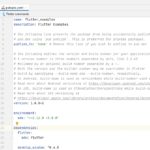An image that you can insert into your site to provide information, add a little style or represent hyperlinks is called an in-line graphic. There are several types of images depending on what they will be used for including GIFs, JPEG, PNG, and WebP files which all have their own pros and cons but I recommend using them as opposed to just sticking with one type because then there’s no guarantee how well it’ll work across different devices/browsers!
Inline images are a kind of image that you’ll see in any website or blog post and they can be used as an easy way to add another dimension to your content.
The next item is an inline image 
These images can help your readers get a better understanding of what’s going on in the text, which provides them with a better overall experience as they read through your article. Inline images are also used as an easy way to provide context without having to use too many words and these types of images can be seen mostly anywhere you look online or offline.
As mentioned earlier, inline images are typically small-sized so that they do not interfere with the reader’s scrolling experience as they’re reading through a blog post or website.
Inline pictures are part of a web document. They are pulled by the browser and shown at the same time as the HTML. Small-sized inline images are advised for the browser to be able to retrieve and display them quickly.
Images that are too large may cause the website to take longer to load, and would make it appear on the screen at a slower rate. Most people do not have the patience to wait for something to happen. This would have a negative influence on site visitors.
Images from other websites or external servers are utilized inside HTML inline images. It’s a point of contention to incorporate pictures from outside sources since it is possible without authorization. Inline images may be inserted into paragraphs and headings using the img tag. The img tag can be adjusted to be floating with css or align attributes, it is often enclosed inside another THML element like p or div.
The align attribute may be used to define the inline image style. The align property tells the browser where to place an inline image next to text. The picture on a web page can be put in the top, middle, or bottom part of the screen.

